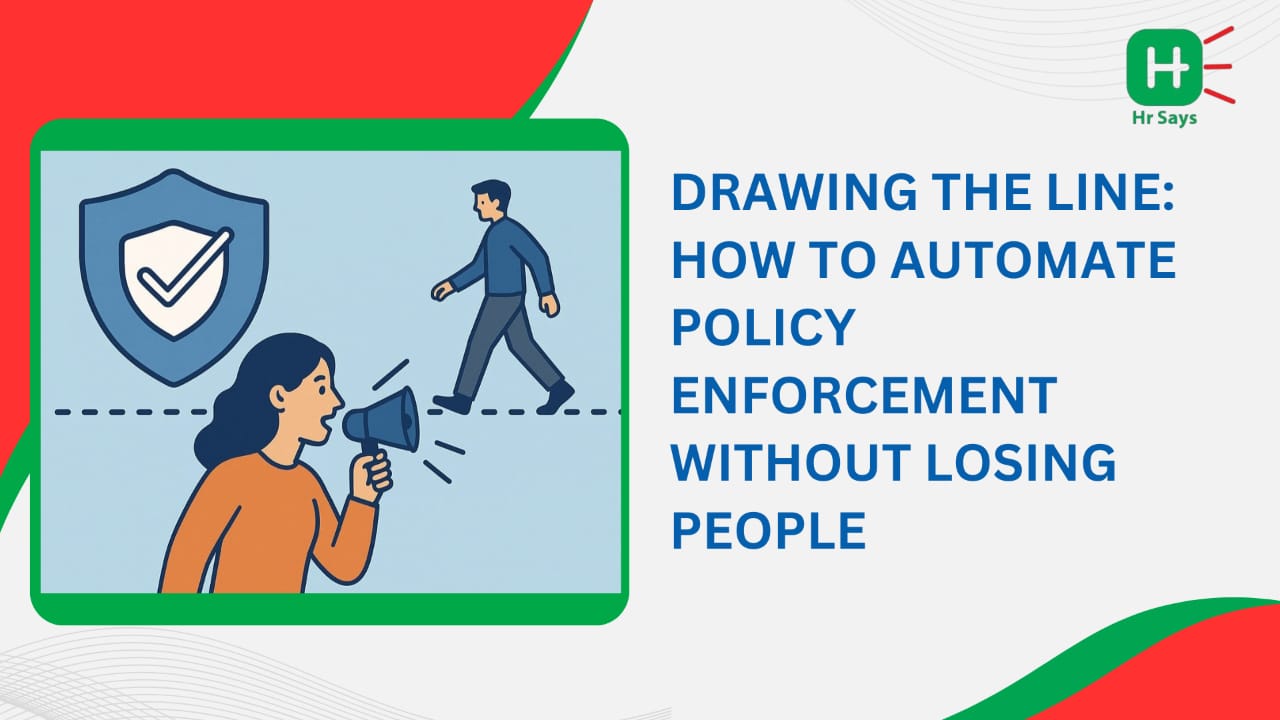Can rule enforcement be done without getting relationships damaged? With more automation in the world, businesses have a new predicament, how to maintain policy without conveying coldness and control. And when trust is breached there is no way it can be repaired by the cleverest of systems.
The Balancing Act Begins
Automation isn’t the villain. But it can be misunderstood. When businesses introduce bots, software, or AI tools to monitor behavior or enforce policies, employees often see it as surveillance—not support. The result? Fear. Resistance. Disconnection.
So where do you draw the line between efficiency and empathy?
Why Businesses Lean on Automation
Automated enforcement comes with clear wins:
● Speed and consistency
● Reduced human bias
● Scalable compliance management
● Easier audit trails and reporting
But these gains mean little if your people feel devalued. That’s the gap businesses often overlook.
When Automation Feels Like Policing
Even well-meant systems can backfire. Picture this: A pop-up blocks an employee from sending an email with sensitive data. No context. No warning. Just a cold “Access Denied.” It may be a smart tool, but it feels like a slap.
Here’s what often goes wrong:
● Lack of transparency
● Overuse of rigid restrictions
● Zero room for human judgment
● No communication about why a rule exists
What starts as prevention becomes punishment.
Building Trust Through Smart Design
Automation doesn’t need to alienate. When designed with people in mind, it can build trust
instead of breaking it.
What Makes It Work?
● Contextual nudges: Soft reminders instead of hard stops.
● Customizable policies: Flexibility shows trust in teams.
● Clear communication: Explain what’s being monitored and why.
● Feedback loops: Let employees flag false positives.
Human-first design isn’t a feature—it’s the foundation.
Communication Is Your Strongest Tool
Before rolling out automated enforcement, prepare your people. Tell them what’s changing.
More importantly—tell them why.
Be honest. Say this is about safety, not spying. And listen to their worries. If they feel heard,
they’re more likely to accept the change.
Transparency Builds Buy-In
Avoid vague announcements. Be clear:
● What’s being monitored
● What triggers enforcement
● What data is stored (and what’s not)
● Who has access
Silence breeds suspicion. Information creates trust.
It's Not Either-Or—It’s Both
Automation and trust don’t have to fight each other. The most resilient organizations use both—smart tools and smarter people.
Let tech handle the rules. But let humans lead the culture. That’s where the future of work lives.
Conclusion
Automation isn’t the problem. Disconnection is. By focusing on how systems feel—not just how they function—companies can protect their values without pushing people away. Enforce policies, yes. But do it with clarity, compassion, and conversation.

 Automating policy enforcement often risks employee trust. This blog explores how businesses can integrate smart automation while maintaining transparency, empathy, and open communication—ensuring compliance doesn’t come at the cost of connection.
Automating policy enforcement often risks employee trust. This blog explores how businesses can integrate smart automation while maintaining transparency, empathy, and open communication—ensuring compliance doesn’t come at the cost of connection.












.jpeg)












.jpeg)